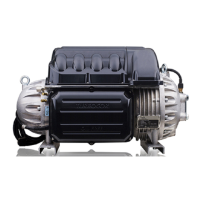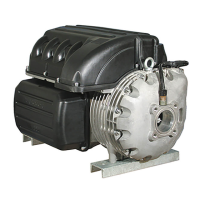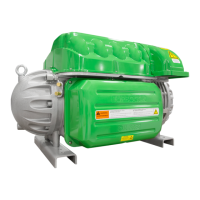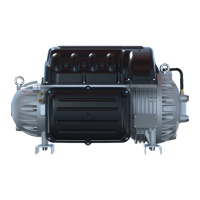62 of 165 M-SV-VT-001-EN Rev. A
Compressor Components
3.3.5.2 Verication
1. Before connecting the VFD motor cables, using an ohmmeter, check the resistance between the
motor phases and each phase to ground.
2. While the Compressor is running under a steady load, using a clamp-on ammeter, verify the
3-phases measure a similar amperage.
18. Install the Motor Side Cover.
19. Leak test the Compressor to the appropriate pressure and industry standards.
20. Evacuate the Compressor to the appropriate pressure and industry accepted standards.
21. Charge the Compressor with refrigerant.
22. Restore power to the Compressor.
Description Nm Ft.Lb. In.Lb.
Power Cover, SHCS, M5x16 6 5 53
Motor Terminal Block to Compressor, SHCS, M5x20 6 5 53
Tower Feed Through Nut, Brass, M16x1.5 20 15 177
Power Cable Nut, Brass, M10x1.5 10 8 89
Bus Bar Mounting, SHCS, M5x16 5 4 44
Motor Power Feed Through, SHCS, M6x20 20 15 177
Table 19 - Motor Power
Feed Through Torque
Specications
3.3.5.3 Torque
Specications
3.3.6 Motor The motor type employed is a permanent magnet, synchronous speed motor. The winding section of
the motor is similar in design to a standard 3-phase star-connected Stator.
Stator
The Stator operates as the force that drives the shaft, utilizing the high voltage (HV) DC pulses
provided to the motor windings by the Inverter located in the VFD.
Rotor
The Rotor is an integral part of the motor shaft and is a permanent magnet design that allows the
synchronous characteristic required for broad range speed control.
Motor Protection
Conventional motor protection based on incoming 3-phase currents and voltage conditions are
inadequate to protect the motor and electronics in the event of mishap due to the total separation
of the motor windings from the incoming 3-phase current by the DC conversion. Therefore, the bulk
of protection is based on measurements taken by the Inverter and calculations derived from those
measurements. Motor currents and voltages displayed in the SMT cannot be directly compared or
correlated to incoming 3-phase AC values.
All Stators employ overheat cutout protection utilizing two (2) separate thermistors embedded in the
windings. In the event that the one of the Stator Thermistors has failed, the Compressor can continue
to run. However, if both thermistors have failed, the Stator assembly must be replaced by DTC.
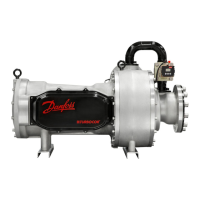
